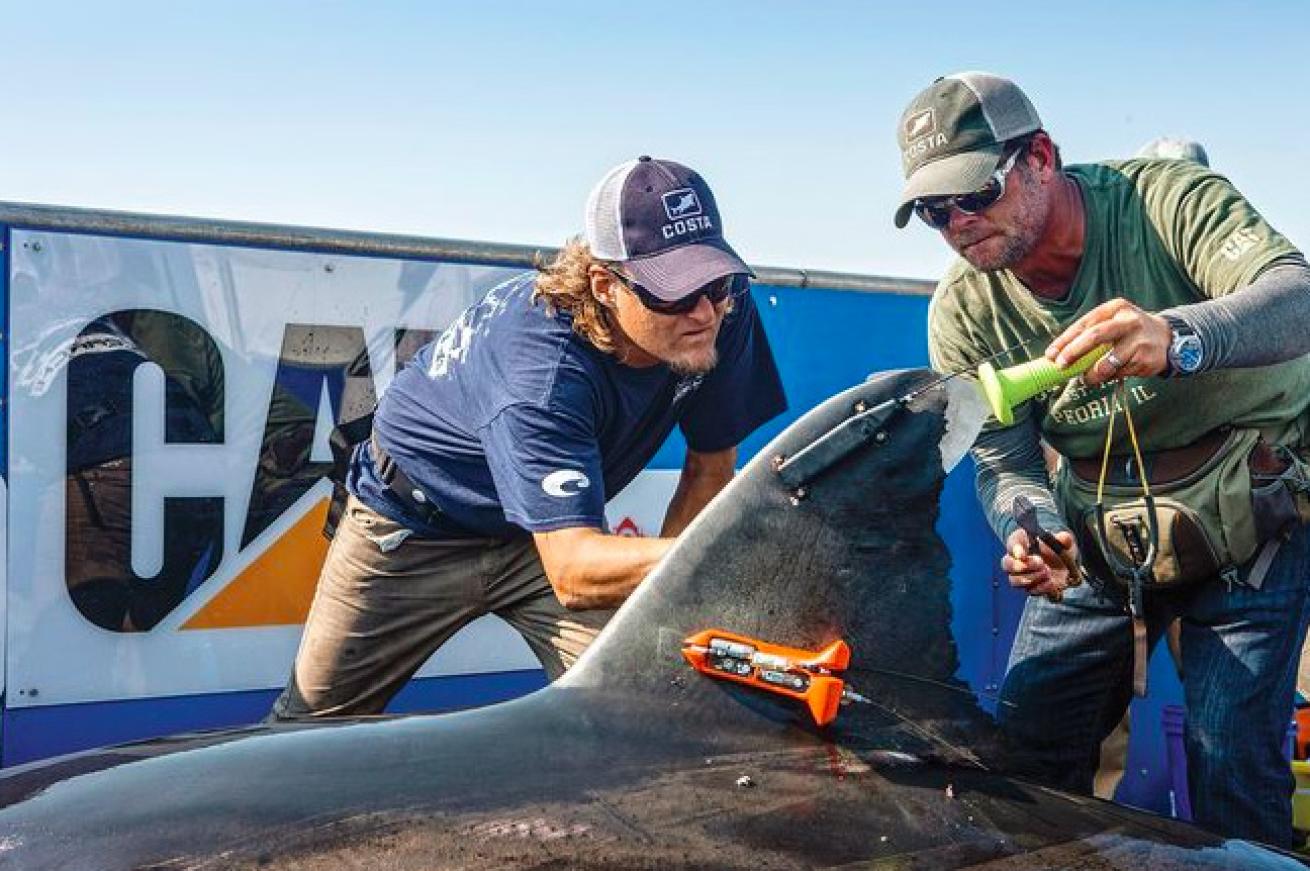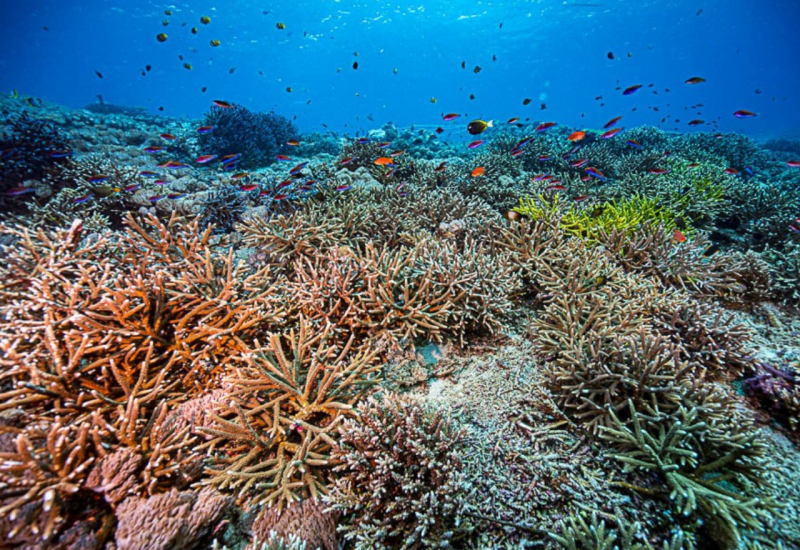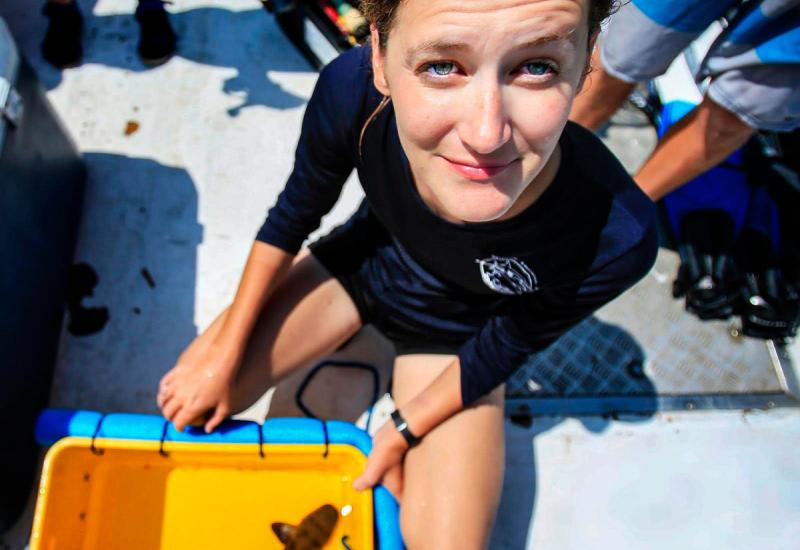Shark Tagging: Myths, Misconceptions and Nonsense

Courtesy OcearchResearchers attach a telemetry tag to a shark's fin.
Divers want to see sharks underwater.
But they’ll see more in the long run with the help of well-researched, practical conservation plans. This is made possible by the work of scientists in the field and, yes, even tagging. While many will squirm at the thought of temporarily removing a shark from the water and piercing its fin with a tag, the reality is clear: This practice is necessary, minimally invasive, and commonly accepted among scientific experts.
Made famous by countless repetitive Shark Week specials and a small army of sharks whose locations you can track on Twitter, the telemetry tag is one of the best-known tools in a shark researcher’s toolkit.
By placing one of these tags on a shark, we can track migration patterns anywhere in the world, which is both pretty cool and incredibly useful. Newer tags contain all sorts of other neat-o electronic sensors that allow scientists to study many aspects of shark behavior and biology. It’s also considered to be minimally invasive by vertebrate field research ethical standards. Data from telemetry studies has been essential for protecting key habitats for many shark species. (You can learn all about how these tools work in this great blog post by my Ph.D. supervisor Dr. Neil Hammerschlag)
Despite all this, some scuba divers absolutely hate telemetry tags. I’ve had people react angrily and accuse me of animal abuse when I post photographs of telemetry work in the lab where I got my Ph.D. And some of the calmer anti-tagging activists assure me that scientists are able to get the same kind of data without using tags (though no one has ever been able to answer how, exactly, we’re supposed to do this).
Is there anything to the arguments against telemetry tagging? Frankly, no there isn’t—most, if not all of the claims made by these extremists are simply factually wrong.
Does Tagging Hurt Sharks?
Attaching telemetry tags to sharks is not an incredibly painful, torturous process as some claim. Whether or not sharks feel pain at all is a matter of the presence and density of certain types of nerve cells, and isn’t influenced by how loudly you yell at scientists on the internet.
The evidence that fish can feel pain, in general, is quite mixed, but regardless sharks don’t have blood supply or nerve cells in the outer edge of their fins, so attaching a tag there is the equivalent of less than an ear piercing if done correctly. And if you’ve ever seen the wounds that sharks get from their own regular activities like mating, you’d stop wondering why I giggle when people ask me if research methods hurt the shark. Scientists aren’t cold unfeeling monsters, and we are required to undergo research ethics training and approval before we do anything—a pointless, torturous research method simply would not get approved. Also, one advantage of telemetry tracking is that we know for sure that the sharks we’ve tagged are still alive and doing fine, because we can track them swimming around for months or years after we tag the animals.
Can Fishermen Track Sharks with Satellite Tags?
The claim that satellite tags from scientists help fishermen find sharks to kill is ignorant of both telemetry technology and how fishing works. It’s not like fishermen don’t know where fish are until they check the Twitter accounts of internet-famous sharks, and it’s not like they would spend money on boat fuel to go after one specific shark. And as someone who spent a miserable hot day in the Florida Everglades trying and failing to recover a satellite tag that had detached and floated to the surface, let me assure you that the GPS data you get from one of these tags is not precise enough that you can easily get to the exact location where it is broadcasting from.
Can scientists track shark movements in detail without using telemetry tags?
No. I really don’t know what these folks are talking about when they say that scientists don’t need to use telemetry tags to track shark migrations in detail.
As is the case with so many issues today, some misguided advocates will react passionately to out-of-context images, while the reality is more nuanced than what can be expressed in an Instagram post or 280-character tweet. The best thing divers can do to support shark populations is to better inform themselves by expert voices rather than listening to another angry internet voice shouting at experts.

Josh LibermanDr. David Shiffman
About David Shiffman
Dr. David Shiffman is a marine conservation biologist specializing in the ecology and conservation of sharks. An award-winning public science educator, David has spoken to thousands of people around the world about marine biology and conservation, and has bylines with the Washington Post, Scientific American, New Scientist, Gizmodo and more. Follow him on Twitter, Facebook and Instagram @WhySharksMatter, where he’s always happy to answer any questions about sharks. Please direct any questions or hate mail to [email protected].
About Science Stop with Dr. David Shiffman
Before you surface from a deep scuba dive, you make a safety stop. Before you take a deep dive into the complicated world of ocean conservation, I encourage you to make a science stop by reading this column. The global environmental challenges we face can seem overwhelming, and concerned citizens, especially people like scuba divers who love spending time in the ocean, want to help do their part to fix these problems. However, with lots of conflicting, misleading or just plain wrong information out there about environmental problems and how you can help solve them, it can be hard to know how to help. In some cases, well-intentioned but misinformed activists not only fail to help solve a problem, but can actually make the problem worse, or harder to solve! Put simply, if we’re going to fix the massive problems facing the ocean, the details matter, and those details can be confusing! In this monthly column, my goal is to teach you the true scientific facts behind some of the most pressing threats facing the ocean and the solutions experts believe will help solve them. I will also try to dispel common misconceptions about these threats and their solutions.










